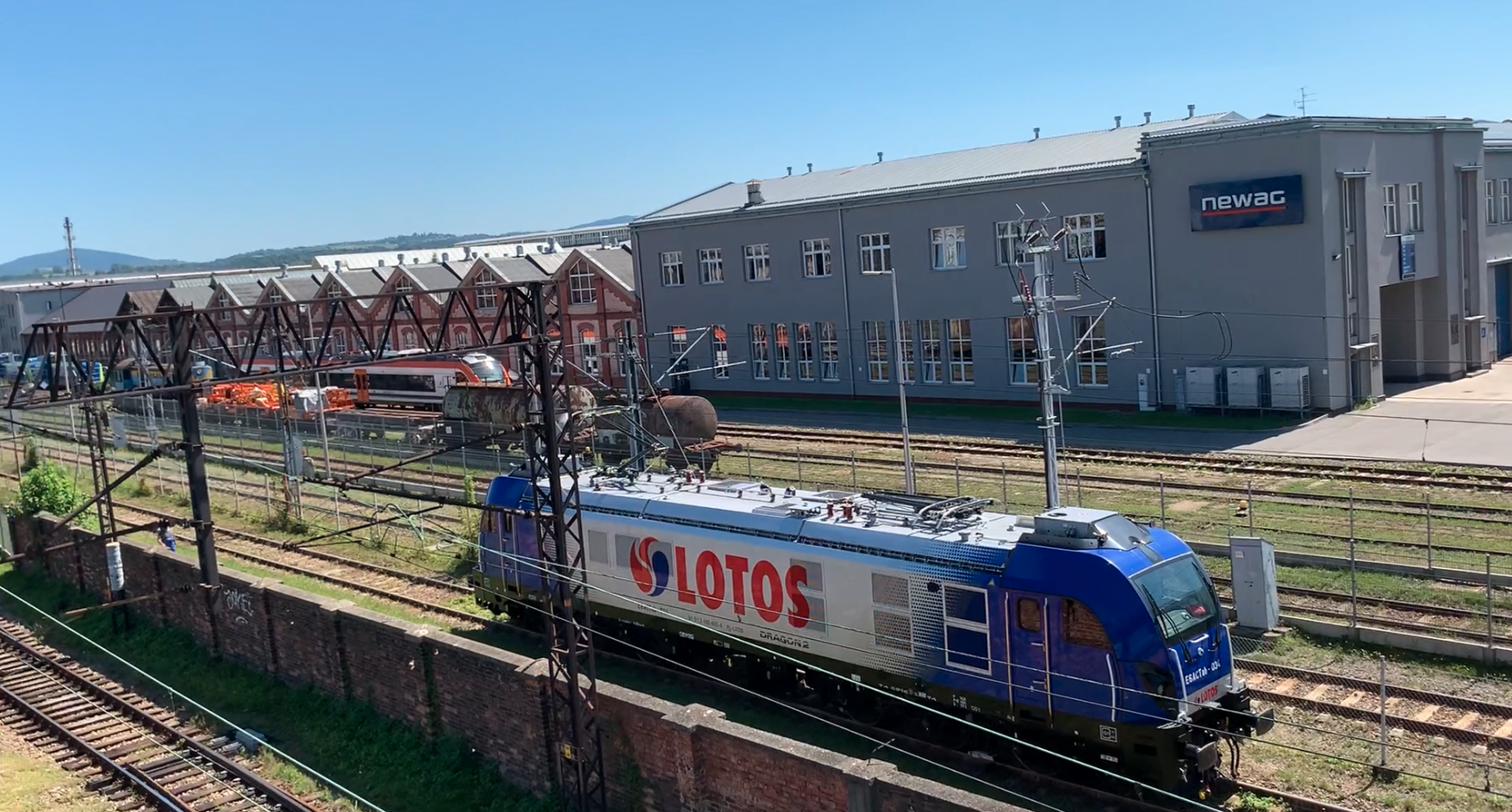Nowy Sącz 26-05-2024.
Geographic coordinates: 49.605N 20.704E. Elevation 308 m.
The history of NEWAG.
NEWAG is a railway company operating in Nowy Sącz since 1876. Initially, these were renovation workshops. Currently, it is a joint-stock company listed on the Warsaw Stock Exchange. The share capital is PLN 11,250,000. Company address: Stanisława Wyspiańskiego 3, 33-300 Nowy Sącz.
Currently, NEWAG specializes in the production and modernization of rolling stock, both diesel and electric, and passenger wagons. Hybrid trains are NEWAG’s hit. The company also operates on the tram market and the construction of metro trains. In addition to the plant in Nowy Sącz, the company has a plant in Gliwice, as the Local Electric Locomotive Production Department. Vehicles manufactured by NEWAG are used in Poland and Italy.
Imperial and Royal Railway Workshops (1876-1952).
The beginnings of the railway in Nowy Sącz were difficult. Let us remember that at that time, Poland was under partition, and the part of Lesser Poland, where the Sądecka Land is located, was called Galicia. In 1869, the Nowy Sącz City Council and representatives of the city of Tranów went to Vienna to encourage the Austro-Hungarian authorities to build a railway line from Tarnów to Nowy Sącz. Only in 1873, in Vienna, the Austro-Hungarian parliament decided to build the Tarnów-Leluchowska Railway, 145,700 km long, with a route running through Nowy Sącz. The construction of the trail took three years.
Due to the construction of the first railway lines in Podkarpacie, and above all the Tarnów-Leluchów railway line, in 1876, the Imperial and Royal Railway Workshops were founded in Nowy Sącz. The workshops were built between January 1876 and September 1876.
The Tarnów-Leluchów line is currently the national railway line No. 96, which connects the Tarnów station with the Leluchów stop and is 145.916 km long. The trail runs from north to south. The entire line is electrified. This line is popularly known as “Kryniczanka”. On many sections, the Poprad River flows along the railway line and the scenic provincial road No. 971 from Piwniczna-Zdrój to Krynica-Zdrój runs. At the time of construction, the line ran south of the center of Nowy Sącz.
The first train entered Nowy Sącz in August 1876. At the same time, the Imperial and Royal Railway Workshops began operating. There were approximately 20 employees, including a foreman who reported directly to the station chief. Workshop workers carried out inspections of locomotives and wagons as well as repairs. There was a forge, a mechanical workshop and a spare parts warehouse. The workshop inspected 12 steam locomotives, 40 passenger and baggage wagons and 200 freight wagons daily. The number of trains on the railway route increased. Already in 1877, the workshops employed 60 workers. In the period 1880-1912, the workshop was gradually expanded.
Only men aged 18-35 were accepted to work in the workshop. Often, fathers brought their own sons, who, after being accepted, worked under their supervision. Locksmiths, blacksmiths, carpenters and craftsmen working with wood were eagerly welcomed. Work started at 7:00 a.m. and ended at 6:00 p.m. There was one lunch break which lasted one and a half hours, from 11:55 to 13:25. Own meals were eaten in the barracks. The eight-hour working time was introduced only in 1912, but then people began to work in two shifts. On Saturday, work hours were shorter, i.e. until the tasks assigned to a given brigade were completed. The factory siren announced the beginning and end of work.
In 1896, over 400 workers worked in the workshop. The best specialists were sent to training in Vienna and Prague. Steam locomotive specialists were also sent to London. All at the company’s expense. Workers from Stanisławów came to Nowy Sącz to study. During the year, 20-25 steam locomotives and 45-50 carriages underwent general overhauls.
During the Great World War, the workshops did not suffer damage, even though the front passed through Nowy Sącz twice. The workshops specialized in the construction of armored trains for the Austro-Hungarian army, which were built and serviced.
The Great World War brought independence to the Republic of Poland, which we regained after 123 years of partition. Nowy Sącz also returned to Poland. The city still had an established position in the region, although it was far from the position of Tarnów and Kraków. Rzeszów had a similar position to Nowy Sącz. The population of the city of Nowy Sącz was over 30,000 inhabitants. The town hall and district office were still located here, and big politics occasionally visited between the rivers; Dunajec and Kamienica. The driving force of the entire Nowy Sącz region was still the railway line, which encouraged investors to settle and invest capital, but above all, it provided employment to many inhabitants of the region. Economic activity was manifested in numerous craft organizations, banking institutions and education. Culture and sports life developed. Nowy Sącz developed slowly but systematically. The community was open and worked collectively. In 1928, the President of the Republic of Poland, Ignacy Mościcki, visited Nowy Sącz and the inhabitants prepared a dignified welcome for him. Another event that united the residents was the funeral of General Bronisław Pieracki in 1934. The residents showed solidarity during the flood in 1934, when many people lost their entire belongings. Just like today, there was a division into the poor and the rich. The rich lived on Jagielońska Street, and the poorest lived in barracks that used to be railway wagons. Already in the last years of the 19th century, a socialist movement emerged in the railway district and gained popularity among workers. But they were very far from rejecting the Catholic faith. In Nowy Sącz, conservatism, the Christian Democrats and the national movement dominated politically.
In 1918, the plant renovated the first steam locomotive of the kkStB 308 series in independent Poland, which in Poland was designated type Pf12. It was a steam locomotive of Austro-Hungarian production, with an axle system of 2’B1′ n2. The steam locomotive used saturated steam (without a superheater) and a twin engine. The steam locomotives were built in the period 1895-1908. Curb weight 54,700 kg. Service weight 60,600 kg. Service weight with tender 91,200 kg. Total length 16.99 m. Diameter of driving wheels 1.96 mm. Diameter of rolling wheels 0.97 m. Pressure in the boiler 12-13 atm. Heating area 168.40 m2. Grate area 2.90 m2. Design speed 100 km/h.
In 1920, workshops began to accept private users’ rolling stock for renovation. Their locomotives and wagons were renovated.
In 1922, the name of the plant was changed to Main Workshops, 1st class, Nowy Sącz. At that time, 1,800 workers worked in the plant. During this time, there was an organizational change in the plant. The department was divided into three departments; locomotive, wagon and mechanical. The administration operated separately; accounting, cash register, order and planning department.
At the end of August 1939, the plant was evacuated to Stanisławów, in the Polish Borderlands. Currently a city in Ukraine called Ivano-Frankivsk. Some machines and about 500 employees were transported. The Defensive War of 1939 was lost for Poland. The Germans entered the city on September 6, 1939. During the Germanic occupation, the Sądecka Land was part of the General Government with its seat in Kraków, and Nowy Sącz itself became the seat of the district. The Germans expanded the railway works. In January 1944, employment reached 6,000 workers. A large percentage were prisoners of war. A few months before the Muscovites entered the city, the Germans took away most of the machinery and equipment and destroyed about 50% of the infrastructure. Polish workers managed to hide some of the tools, thanks to which work could be quickly resumed.
From January 13, 1945, fratricidal fights (Germans and Muscovites) took place in the vicinity of Nowy Sącz. On January 18, 1945, the Nowy Sącz castle turned into rubble. In the afternoon of January 18, 1945, the first Soviet troops reached the Dunajec River from the direction of Kurów, capturing the bridge that the Germans did not have time to blow up. On January 20, 1945, troops of the 38th Army of Colonel General entered Nowy Sącz. Kirill Moskalenko, part of the 4th Ukrainian Front of Army General Ivan Petrov. Within a dozen or so days, the Muscovites moved the front nearly 100 km. A new occupation began, this time Soviet.
Rolling Stock Repair Plant in Nowy Sącz (1945-2005).
On February 3, 1945, the workshops resumed work. On April 19, 1945, the first Ty2 series steam locomotive was put into operation. At the same time, the plant area was being cleared of rubble and tidied up. The employees tried to create a joint-stock company. However, under the decree on the nationalization of industry in Poland of January 3, 1946, all enterprises in seventeen industries were taken over. The plant in Nowy Sącz was nationalized, which was expected.
In 1950, the plant was renamed Przedsiębiorstwo Polskie Koleje Państwowe, Mechanical Workshops No. 3 in Nowy Sącz, and in 1951, it was changed to Zakłady Naprawcze Parowozowo-Wagonowe No. 3 in Nowy Sącz.
In 1952, after the plant was excluded from PKP structures, it was transformed into an independent enterprise and given a new name: Zakłady Naprawcze Taboru Kolejowego Nowy Sącz.
Because socialism was a system in which communists always talked about peace, in fact they spent 10-15% of the state budget on the army. In 1980, the military budget in Poland was approximately PLN 230 billion. In addition, workplaces and schools were built in such a way that there were even shelters on their premises. That is why five shelters were built in ZNTK Nowy Sącz in the 1950s. Currently (2024) all these facilities have been demolished.
In 1963, by resolution of the Council of Ministers, the plant was selected to repair diesel locomotives, and from 1966, diesel wagons and diesel multiple units were also repaired. Since 1967, SM30 series diesel locomotives have been renovated.
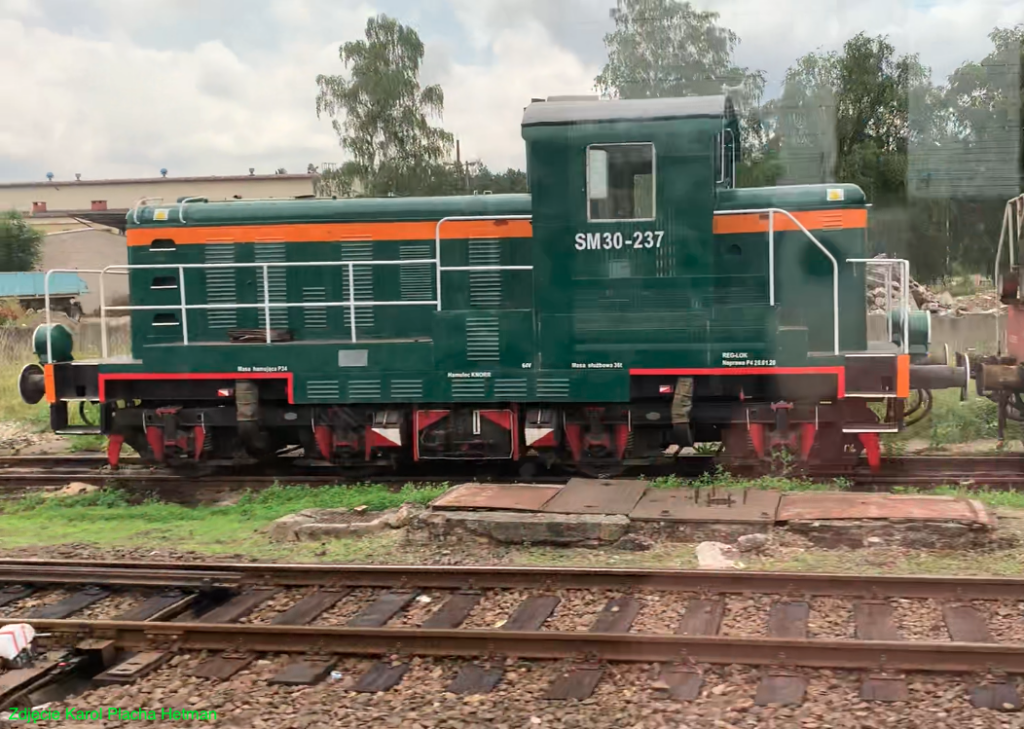
In June 1972, renovations of steam locomotives were completed. The last steam locomotive repaired was TKt48-166. But in the 1970s, steam locomotives of narrow-gauge railways were still being renovated. Due to the limited machinery available for repairs of narrow-gauge steam locomotives, the plant gradually withdrew from their repairs and preferred repairs of narrow-gauge diesel locomotives.
In 1972, renovations and repairs of SM42 diesel locomotives began. Since 1977, diesel locomotives of the SP42, SM48 and SM31 (Fablok 411D) types have been renovated and repaired. In the 1980s, the company still carried out tasks transferred centrally from PKP in Warsaw.
On December 13, 1981, as a result of martial law, the plant was militarized. Militarization lasted until 1983. In 1982, the plants were again incorporated into the structures of PKP.
In 1989, socio-economic changes took place in Poland. The communists turned into businessmen and took ownership of the national property. There was no lustration and decommunization. Thousands of industrial plants, without the support of the central authorities, lost their markets and went bankrupt. Thousands of workers became unemployed. There was a great social crisis. The government introduced drastic and uncompromising economic reforms.
In 1991, the plant in Nowy Sącz again became an independent state-owned enterprise subordinated to the Ministry of Transport, but in fact it meant “Go it on your own”.
In 1991, the modernization of passenger cars began at ZNTK Nowy Sącz. By 1996, major repairs, combined with modernization, were carried out on all types of passenger cars operated by PKP at that time.
On September 6, 1994, the Minister of Ownership Transformations issued a notarial deed transforming the plant into a sole-shareholder joint-stock company of the state treasury. In 1995, the company’s shares were transferred to national investment funds (NFI), and the majority stake went to X NFI Foksal. It should be emphasized that almost all railway plants have undergone the same process of ownership transformation and, importantly, no plant has improved its financial situation.
At the beginning of 2001, ZNTK Nowy Sącz was still in a difficult financial situation due to the limited number of orders. Managers were faced with very difficult decisions, whether to take the risk or liquidate the company. In June 2001, by decision of the plant’s supervisory board, its management was changed and a very difficult process of transformation began. Let us remember that this was a period when railway connections, railway lines and even railway stations were closed down.
In 2001, ZNTK Nowy Sącz SA put into service the first repaired electric locomotive of the EU07-379 series.
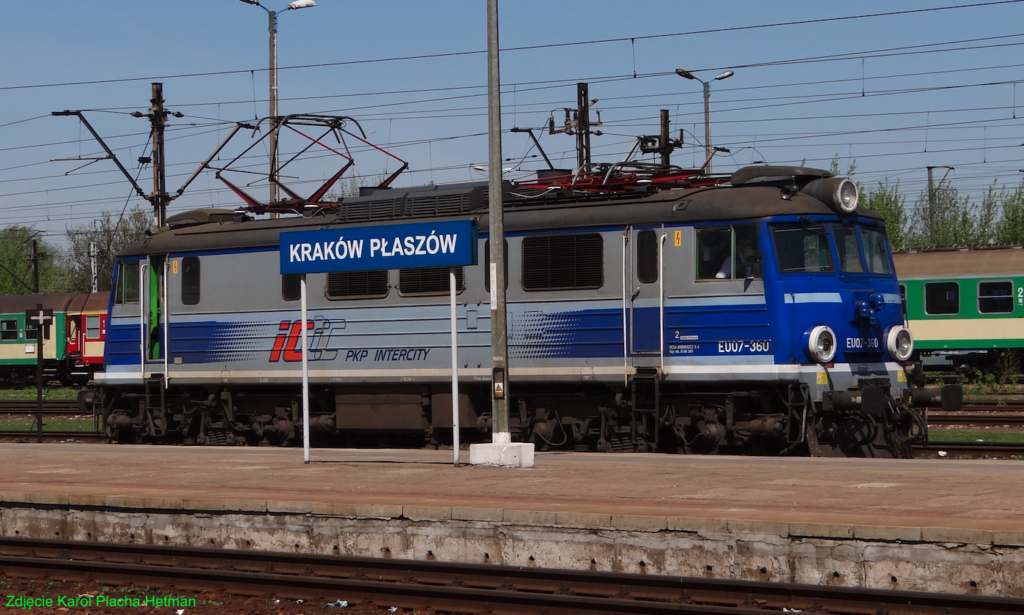
In 2003, the company’s shares were purchased by a private investor. These were very difficult and risky moves. At the same time, the ISO 9001 quality assurance system was implemented, a certificate without which it was impossible to operate on the market at that time. The process of modernization of the machinery and equipment fleet has begun. In 2004, the plants established cooperation with General Electric, which involved equipping ZNTK’s production halls with new equipment.
In 2004, the first repaired and modernized EMU of the EN57-1806 type at ZNTK Nowy Sącz was put into operation. In 2005, the company put into operation the first EMU type EN71 repaired in Nowy Sącz.
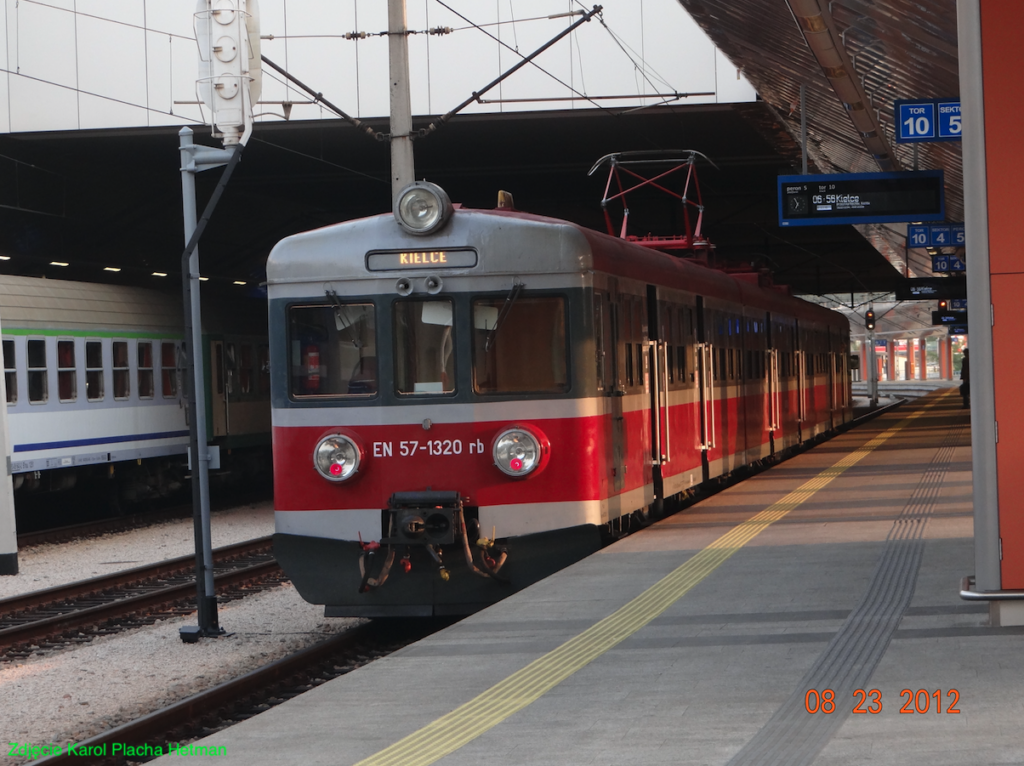
NEWAG S.A. (since 2005).
In 2005, a decision was made to change the company name to NEWAG S.A.
In 2005, NEWAG transferred Szybka Kolej Miejskie Sp. z o. o. in Warsaw, a newly produced EMU type 14WE-01. The NEWAG type 14WE train is the first newly built train in Nowy Sącz. The train has three wagons, type 410B+309B+410B. The train was initially marked EN57/M Halny, then type EN61. The train is standard gauge. Each wagon has two bogies. The middle car is a power car. Axle system 2’2’+Bo’Bo’+2’2′. In the period 2005–2007, 9 units were produced. These trains went to: Fast City Railway in Warsaw, Polregio, Koleje Śląskie and Koleje Małopolskie.
In 2007, NEWAG handed over a new heavy diesel locomotive type 311D to LHS (Linia Hutnicza Szerokotorowa). The 311D locomotive is a deep modernization of the Soviet M62 type locomotive, which has the PKP marking ST44. Popularly, the locomotive is called “Gagarin”. The locomotive was widely used in the countries of the socialist bloc. The frame and bogies were left from the old locomotive and modernized. The NEWAG type 311D locomotive uses a modern General Electric GE 7FDL12 internal combustion engine with a power of 2,130 kW (2,900 HP). Four-stroke, twelve-cylinder engine, V arrangement. Maximum engine speed is 1,050 rpm. The engine is water-cooled and has a turbocharger. The fuel is diesel. The locomotive has an electric transmission (formerly called three-machine). The modernization also includes modern control, diagnostics and safety systems. The driver’s cab has been modernized to provide better working conditions, including improved ergonomics and acoustic insulation.
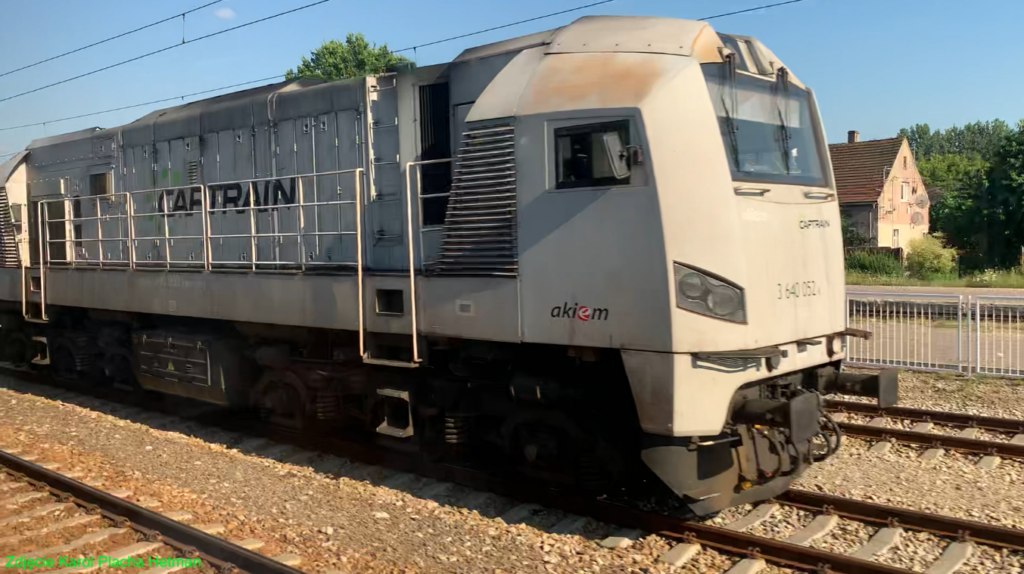
In 2008, NEWAG Nowy Sącz acquired a majority stake in Zakłady Naprawcze Lokomotyw Elektrycznych Gliwice. The plant later changed its name to NEWAG Gliwice.
In 2009, the NEWAG 19WE type EMU received a type certificate. NEWAG 19WE is a standard-gauge, four-car train. Wagon arrangement s+d+d+s. Axis system Bo’Bo’+2’2’+2’2’+Bo’Bo’. In the period 2008-2010, 4 units were built and operated by SKM Warszawa. Based on the 19WE train, a 6-car EMU 20WE was created, marked 20WE.
In 2009, the first copy of the six-axle E6ACTd Dragon locomotive was built in NEWAG Gliwice. Newag Dragon (ET25, ET26 and ET43 series) is a family of six-axle electric locomotives designed to drive heavy freight trains weighing up to 4,500 tons. From 2009 to 2016, the locomotive was produced by NEWAG Gliwice, and from 2017, by NEWAG Nowy Sącz. A total of over 50 locomotives in many versions were produced and are used by Polish freight carriers. Currently (2024), Dragon locomotives are offered in the following versions: Dragon DC: Co’Co’ axle system. Supply voltage DC 3 kV. Continuous power 5 MW. Maximum speed 120 – 140 km/h. With a train weighing 3,200 tons, the speed is 115 km/h. Pull force at starting 374 kN, 450 kN with MaxLoad option. Locomotive length with buffers 20.33 m. Width 3.00 m. Height 4.32 m. Dragon AC: Supply voltage AC 15 kV 16 2/3 Hz, AC 25 kV 50 Hz. Continuous power 5 MW. Maximum speed 120 km/h. Pull force at starting 374 kN, 450 kN with MaxLoad option. Locomotive length with buffers 20.33 m. Width 3.00 m. Height 4.32 m. Dragon MS: DC 3 kV, AC 15 kV 16 2/3 Hz, AC 25 kV 50 Hz. Continuous power 5 MW. Maximum speed 120 km/h. Pull force at starting 374 kN, 450 kN with MaxLoad option. Locomotive length with buffers 20.33 m. Width 3.00 m. Height 4.32 m. Dragon DIESEL: Internal combustion engine. Continuous power 2.3 MW. Maximum speed 120 km/h. Pulling force at starting 370 kN. Locomotive length with buffers 20.33 m. Width 3.00 m. Height 4.32 m.
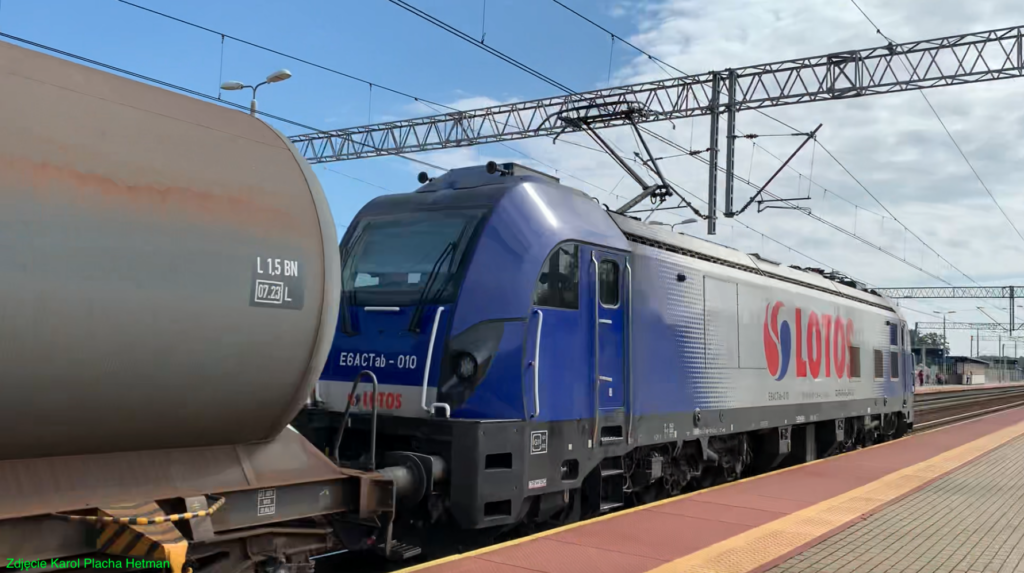
In 2010, NEWAG modernized the first heavy diesel shunting locomotive, type 16D, for LHS. NEWAG 15D/16D is a standard-gauge (type 15D, PKP ST48 series) or broad-gauge (type 16D) diesel locomotive, produced through a thorough modernization of SM48 series locomotives, leaving only the frame, bogies, fuel tanks and ED118A traction engines. As a result of the modernization, the Soviet-made combustion engine was replaced with a modern, American drive unit from General Electric. The power of the combustion engine increased from 882 kW (1,200 HP) to 1,550 kW (2,107 HP). Co’Co’ axis system. Service weight is 116,000 kg. Length 16.97 m. Height 4.49 m. Width 3.18 m. Wheel diameter 1.05 m. Fuel tank (diesel oil) with a capacity of 6,000 liters. Rated power 1,480 kW (2,013 HP). The maximum tractive force is 38,000 kG. The design speed is 100 km/h. The axle load on the rails is 196.2 kN. The locomotive has six modified ED118A traction engines.
This was not the end of NEWAG finding itself in a perfect niche in the railway industry. Modernizing old diesel locomotives is much cheaper than purchasing new locomotives. Let us remember that at that time, no factory in Poland was producing new locomotives for non-electrified routes. The company was greatly helped by contacts with General Electric, which supplies good combustion engines with power generators.
In 2010, the company delivered the first 6Dg diesel locomotive, which was ordered by PKP Cargo. T-T data of the 6Dg locomotive: Bo’Bo’ axle system. Drive bogie type 1LN. Service weight 73,000 kg. Axle load on the track up to 17,500 kg. Wheel diameter 1.10 m. Total length 14.24 m. Width 3.14 m. Height 4.53 m. Maximum speed 90 km/h. The smallest track curve radius is 80 m. Combustion engine type CATERPILLAR C27. Forked with an opening angle of 60 degrees. Number of cylinders 12. Engine power 708 kW (962 HP). Nominal speed 1,800 rpm. Specific fuel consumption 198 g/kWh. Fuel consumption at idle speed 4.5 l/h. Engine weight 2,400 kg. Main generator type Ghp 400M4C. Ghp 315 S4K auxiliary generator. LSa 430 traction engines. Traction engine power 173 kW. Traction engine weight 2,500 kG. SAB WABCO/ Knorr-Bremse air brake. KL20E type cabin air conditioning.
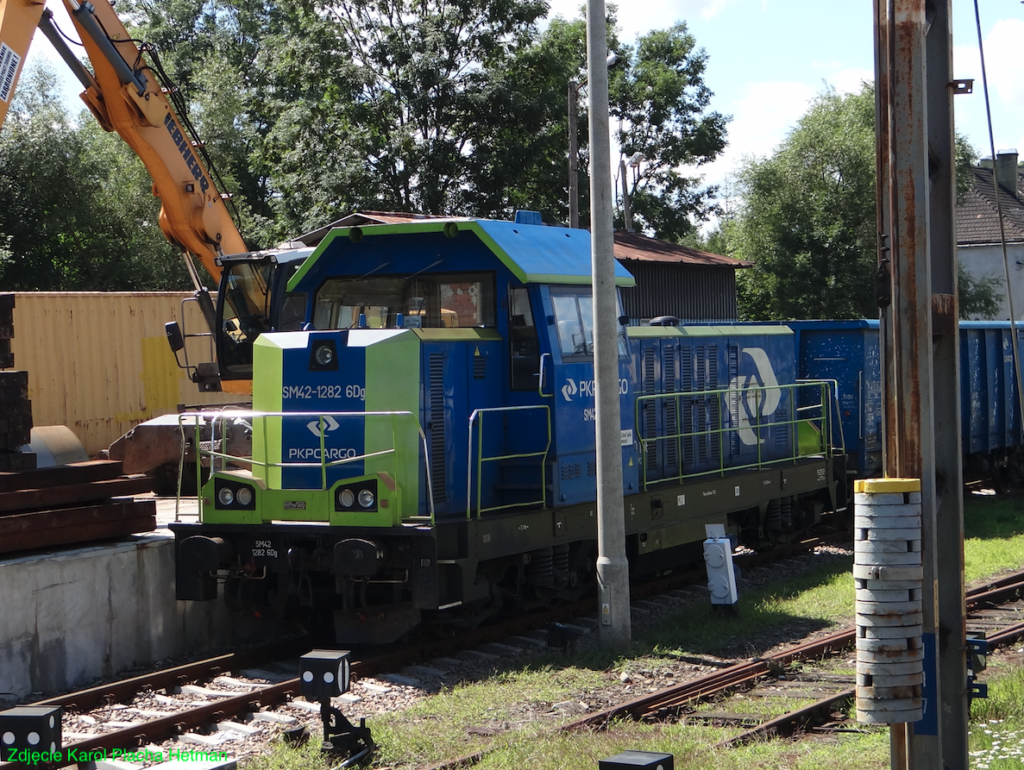
In 2011, NEWAG delivered the first combustion vehicles of the SA137 and SA138 series, which were ordered by the Marshal’s Office of the Pomeranian Voivodeship. NEWAG’s vehicles are marked 220M two-car and 221M three-car, diesel PCS, intended for non-electrified routes. In total, in the period 2010–2014, 9 two-car and 5 three-car units were produced, which are operated by Polregio, and in the past also by Koleje Śląskie and SKM Trójmiasto. T-T data of SA137 and SA138 vehicles: Axle arrangement 220M: B’2’B’, 221M: B’2’2’B’. Car layout 220M: s+s, 221M: s+d+s. Service weight 220M: 82,000 kg, 221M: 105,000 kg. Length 220M: 41.80 m, 221M: 58.36 m. Width 2.85 m. Height 3.90 m. Wheel diameter 0.84 m. MTU 6H1800R84 combustion engine, power 2 x 390 kW. Operating speed 120 km/h. The vehicles have wagons with a low floor zone, 0.60 m from the rail head. Number of seats 220M: 140, 221M: 190. Total number of passengers 220M: 284, 221M: 390. Vehicle 220M have two pairs of entrance doors, and type 221M have three pairs of entrance doors.
Carriers’ interest in new ETZ trains was great. However, there began to be a requirement for a low floor, as in trams and public transport buses. In Nowy Sącz, the first prototype marked type 31WE, i.e. a 4-car ETZ, was built. On the night of February 18-19, 2013, during tests on the Central Railway Main Line, train 31WE set a speed record for a completely Polish vehicle of 211.6 km/h. Subsequently, type 35WE, which has 6 sections, and type 36WE, which has 3 sections, were developed. After them, the type 37WE, 2-section, was created. The last one was type 45WE, 5-section. On the night of August 28-29, 2015, the type 45WE train set a new speed record with a speed of 225.2 km/h. All these trains became one family called “Impuls”. In addition to the difference in the number of sections, the trains differ in the number of entrance doors to individual carriages, the arrangement of seats, the number of toilets, places for people in wheelchairs and with bicycles, passenger information system, Internet access, 230 V sockets and USB sockets.
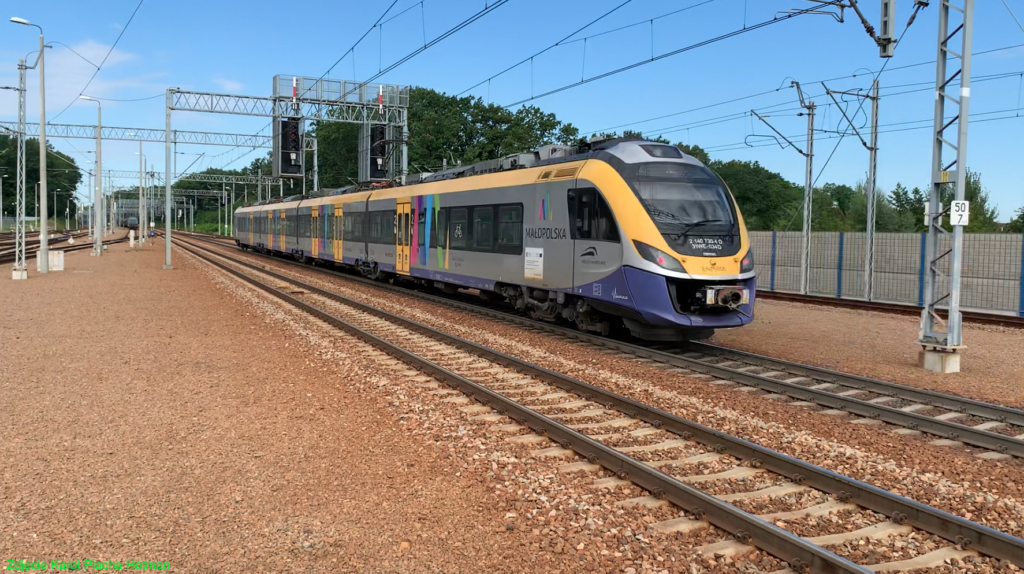
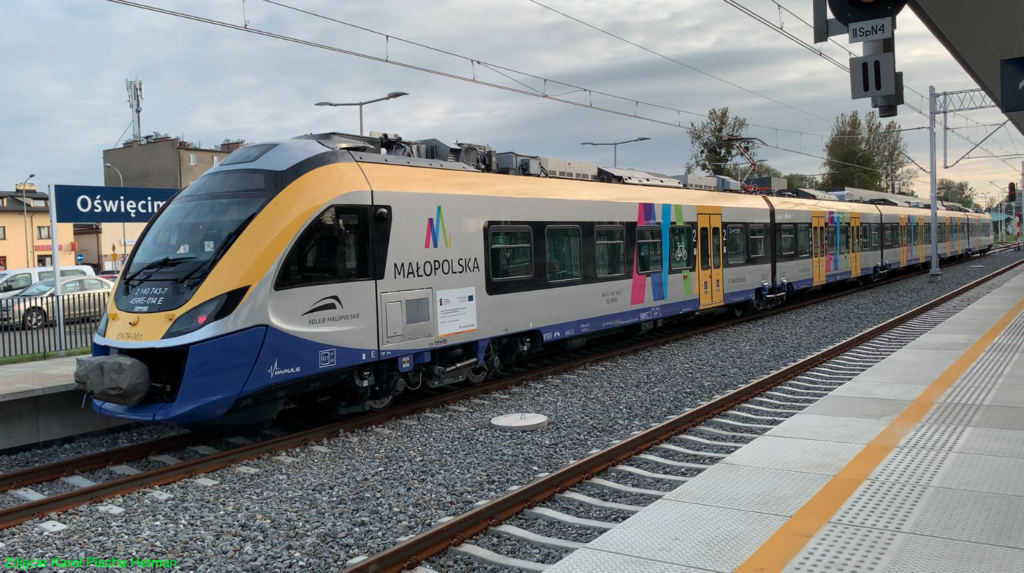
In February 2011, the Siemens concern, in consortium with NEWAG, signed a contract for the supply of 35 Inspiro trainsets for the Warsaw metro, of which the first 10 units were entirely manufactured in the Siemens plant in Vienna, and the remaining 25 units were assembled in Nowy Sącz. A new production hall was built in Nowy Sącz for this task. On September 28, 2015, the Siemens and NEWAG consortium received another order for Inspiro metro trains, this time from Sofia Metro.
On December 5, 2013, NEWAG made its debut on the Warsaw Stock Exchange. In the period 2013-2015, the company’s shares flowed. On June 1, 2015, Taurus Capital Investments acquired 53% of the company’s shares.
On June 18, 2013, NEWAG signed a contract with Koleje Mazowieckie for the sale of one two-unit 222M unit, PKP series SA140, which differs from the earlier 220M, among other things, by meeting four crash scenarios resulting from TSI standards. The vehicle is a two-wagon vehicle. The front of the train is identical to the EZT Impuls trains. Two units were produced for Koleje Mazowieckie, and another four for the Podkarpackie Voivodeship. T-T 222M/SA140 data: B’2’B’ axle arrangement. s+s wagon arrangement. Service weight 88,500 kg. Length 43.00 m. Width 2.84 m. Height 3.91 m. Engine type MTU Powerpack, power 2 x 390 kW. Maximum speed 130 km/h. Entrance height to the wagon 0.60 m, from the rail head. Number of seats 222M: 126, 222Ma: 105+10. Maximum number of passengers 266-270.
On December 3, 2013, NEWAG signed a contract with the carrier Ferrovia Circumetnea (Italy) for the delivery of 4 narrow-gauge Vulcano units, with the possibility of expanding to 10 units. NEWAG Vulcano type 226M, carrier designation DMU-001 to 008. The unit is a two-car, narrow-gauge unit. Rail spacing 950 mm. The Ferrovia Circumetnea carrier uses trains to service connections around the Etna volcano. In 2015, four trains were built, and in December 2017, another four units were ordered. T-T data of NEWAG Vulcano trains: Bo′Bo′+Bo’Bo’ axle system. s+s wagon arrangement. The drive consists of two drive units consisting of a diesel engine and an electric transmission, allowing the train to accelerate to a speed of 100 km/h.
In 2015, the part of the company located in Gliwice was transformed and the Local Electric Locomotive Production Department was established. Let us remind you that for years the plant in Gliwice has been repairing electric locomotives, also for foreign customers. In 2016, all production from Gliwice was moved to Nowy Sącz.
On December 10, 2015, NEWAG signed the first contract for the delivery of EMU Impuls trains abroad, to Italy, for Ferrovie del Sud Est.
In Nowy Sącz, in 2016-2017, a new hall for locomotive production was built at the plant.
In 2017, the company also started building the first Griffin locomotive with the Bo’Bo’ axle system. NEWAG currently offers (2024) Griffin versions: E4DCU / E4DCP – DC 3 kV power supply. Power 5.6 MW. Maximum train weight 3,200 tons. Maximum speed 160 – 200 km/h. Service weight 79 tons. Maximum axle load 19,600 kg. Locomotive length with buffers 19.90 m. E4ACU / E4ACP – power supply AC 15 kV 16.7 Hz, AC 25 kV 50 Hz. Power 5.6 MW. Maximum train weight 3,200 tons. Maximum speed 160 – 200 km/h. Service weight 84 tons. Maximum axle load 20,800 kg. Locomotive length with buffers 19.90 m. E4MSU / E4MSP – power supply DC 3 kV, AC 15 kV 16.7 Hz, AC 25 kV 50 Hz. Power 5.6 MW. Maximum train weight 3,200 tons. Maximum speed 160 – 200 km/h. Service weight 88 tons. Maximum axle load 22,000 kg. Locomotive length with buffers 19.90 m. D4MSU – DIESEL engine. Power 2,300 kW. Maximum train weight 3,200 tons. Maximum speed 160 km/h. Service weight 79 tons. Maximum axle load 19,600 kg. The length of the locomotive with buffers is 19.90 m. The offer included the E4DCUd version, which, in addition to standard electric motors, was equipped with an auxiliary combustion engine with a power of 380 kW, for shunting without electric traction.
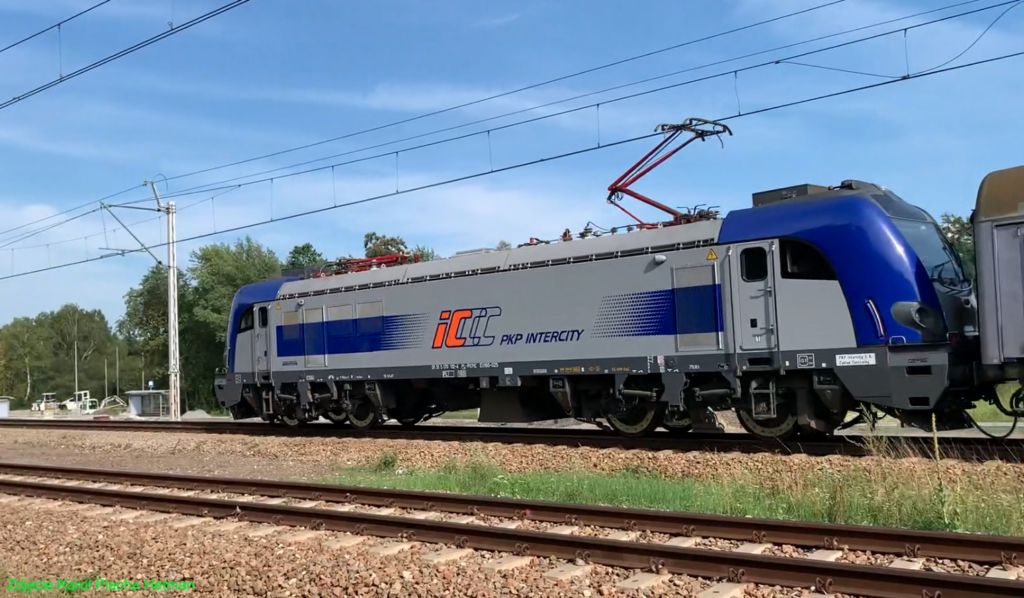
In July 2018, NEWAG presented the Dragon 2 locomotive, a modernized version of Dragon, which is the first 6-axle electric locomotive in Europe compliant with the Technical Specifications for Interoperability (TSI 2014). The first locomotive of this version was marked E6ACTa-001. The locomotive passed the tests and received a certificate. Dragon 2 is the first Polish locomotive equipped with SiC (silicon carbide) power electronics, i.e. equipped with an auxiliary power converter called PSM-175 SiC, developed and manufactured by Medcom. The reason for designing a new version of Dragon was a change in TSI regulations.
NEWAG modernizes and renovates passenger cars of all types. In 2011, at NEWAG, as part of the modernization of the type 134Ab couchette, with a maximum speed of 160 km/h, the parameters were increased to a speed of 200 km/h and the designation was changed to type 134Ac. In 2013, as part of the modernization of 111A compartment wagons, type 168A was created; a compartmentless wagon adapted to transport disabled people in wheelchairs. In 2017, as part of the modernization of wagons of the same type, 16 type 168A wagons adapted to transport bicycles were created.
Hybrid passenger trains have become a huge success for NEWAG. These are trains composed of 2-4 wagons and can run under electric traction as well as on non-electrified lines. The point is that many railway lines in Poland are not yet electrified, and the main junctions are electrified. Such situations occur in voivodeships; Podkarpackie, Lublin, Warmian-Masurian, West Pomeranian, Lower Silesian. When the hybrid train sets off from major cities, it uses 3,000 V DC traction. When it enters a trail without electricity, it uses its own combustion engine and power generator. Thanks to this solution, there is no need to change the traction set or locomotive. In 2020, a contract was signed for the supply of two innovative hybrid vehicles. The Impuls 2 Hybrid Traction Unit, type 36WEh, is the first Polish rail vehicle that, in addition to an electric drive, also has a combustion engine, which allows it to travel on sections without a traction network. During the 13th International Trade Fair TRAKO 2019 in Gdańsk, NEWAG S.A. received the main prize in the prestigious competition named after engineer Ernest Malinowski for products and technical innovations used in the railway industry. The innovative Impuls 2 36WEh Hybrid Traction Unit, which had its premiere at the same time, was awarded a distinction in the competition.
In 2020, NEWAG concluded a contract to deliver 30 electric locomotives to AKIEM based in France, which rents and leases locomotives and passenger trains. Ultimately, 80 locomotives may be built. The contract value is approximately EUR 500 million.
In 2020, a modern logistics center with a modern high-bay warehouse was opened. In 2020, the first and only test track in Poland was launched, allowing vehicles to be checked using many types of voltage.
By 2022, the company in Nowy Sącz has produced two hundred vehicles.
NEWAG signed a contract with the Silesian Voivodeship for the supply of four electric multiple units along with the provision of maintenance services for approximately PLN 156 million. Deliveries of the trains are expected to be finalized in 2027.
Trams.
In the 1990s, during the times of ZNTK Nowy Sącz, major repairs were carried out on Krakow’s KONSTAL trams type 105N.
In 2012, NEWAG built the first tram type 126N Nevelo. NEWAG Nevelo type 126N is a prototype of a low-floor tram composed of three wagons. The premiere of the tram took place on April 11, 2012 in Poznań, and from June 2013, the vehicle was tested in Krakow.
NEWAG cooperates with the Krakow University of Technology. As part of this cooperation, research, development and teaching projects are carried out. In 2017, a mechanical department was established at the Krakow University of Technology; Rail Vehicle Engineering. The company’s operations require the use of the skills of people with knowledge of mechanics, machine construction, automation, robotics and electrical engineering. There are often job advertisements for production engineers and people who can manage the production of machines. NEWAG S.A. company very often looks for technologists, designers and process engineers. The offers include ones for locksmiths, painters, welders, as well as maneuverers and crane workers.
Written by Karol Placha Hetman
